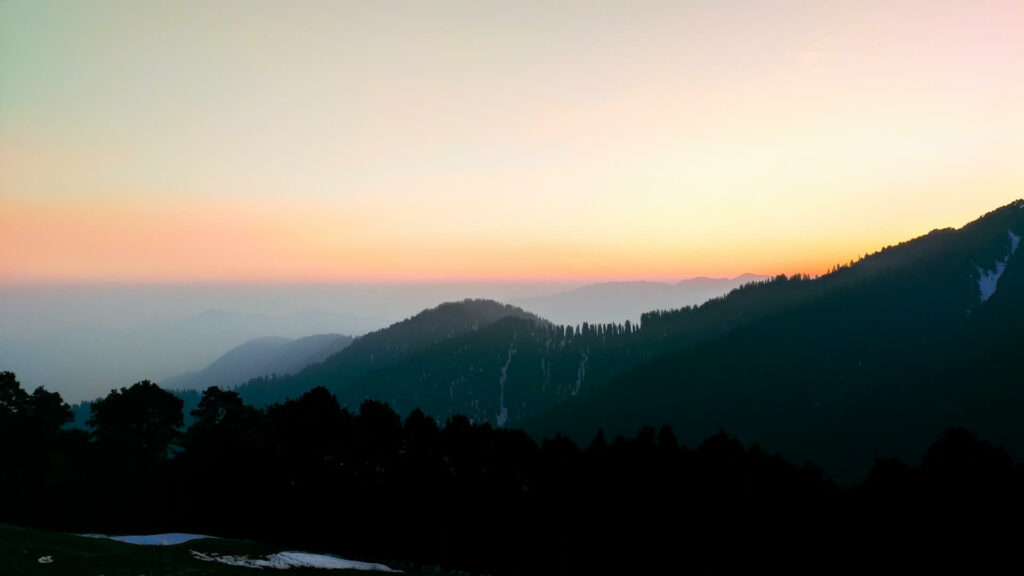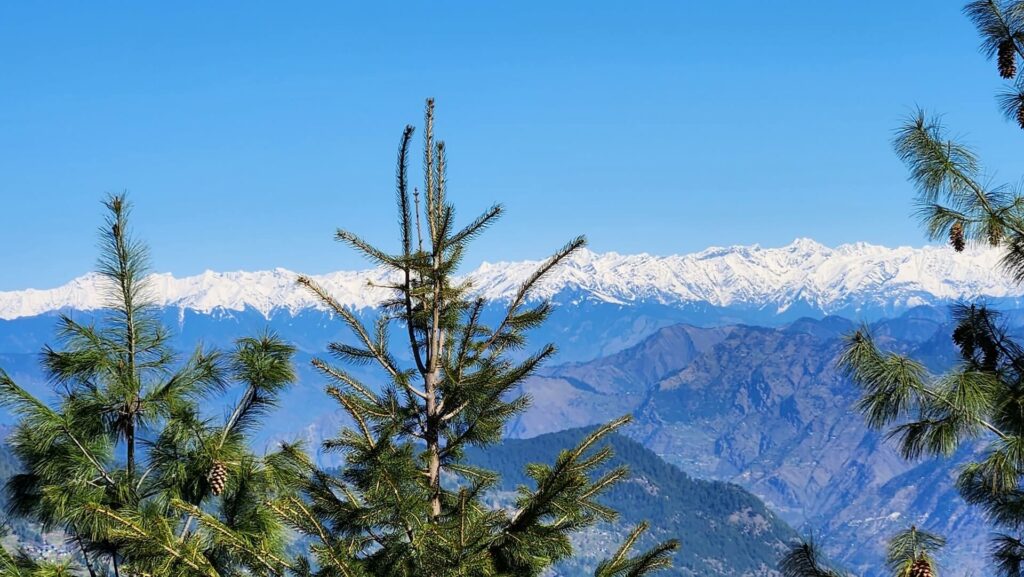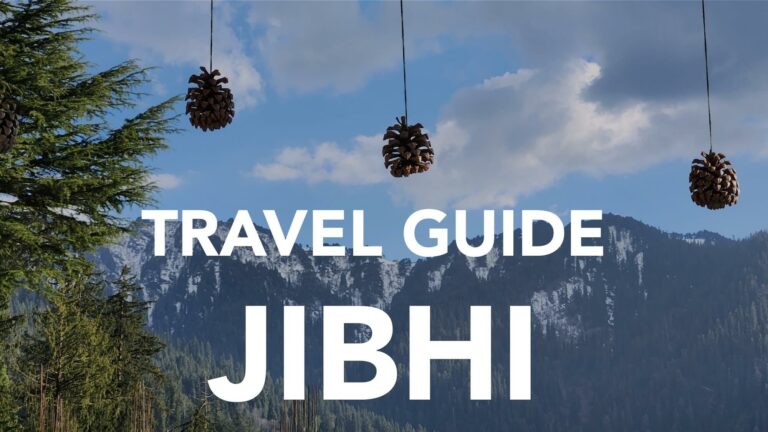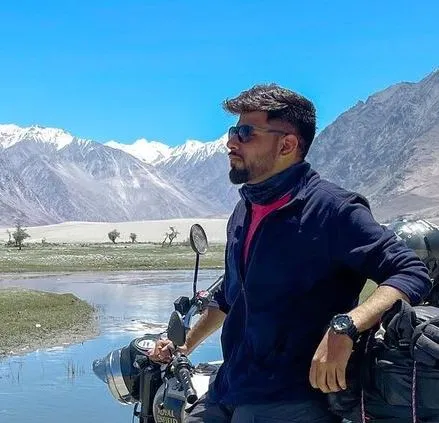Welcome to the Ultimate Travel Guide for Jibhi, a hidden gem nestled in the picturesque Tirthan Valley of Himachal Pradesh, India. This tranquil destination offers breathtaking views, serene landscapes, and a perfect blend of nature and adventure. Whether you’re a nature lover, an adventure enthusiast, or simply seeking solace in the lap of nature, Jibhi has something for everyone. In this ultimate Jibhi Travel Guide, we will take you on a journey to explore the best of Jibhi and provide you with essential information to plan your visit.
How to Reach Jibhi Himachal Pradesh
- By Air: The nearest airport to Jibhi is Bhuntar Airport, located approximately 50 kilometers away. From the airport, you can hire a taxi or take a bus to reach Jibhi.
- By Road: Jibhi is well-connected by road. You can take a bus or hire a taxi from major cities like Delhi, Chandigarh, or Manali. The drive to Jibhi is a scenic one, offering stunning views of the mountains and valleys.
- By Train: The nearest railway station to Jibhi is Joginder Nagar Railway Station, which is about 80 kilometers away. From the railway station, you can hire a taxi or take a bus to reach Jibhi.

Places to Visit in Jibhi
Jibhi Waterfall
Located amidst lush green forests, the Jibhi Waterfall is a captivating sight. The cascading water amidst the tranquil surroundings creates a serene ambiance. It’s a perfect spot for nature walks and photography.
Jibhi Treehouse
Experience a unique stay in the Jibhi Treehouse, a charming accommodation option amidst the tall pine trees. Enjoy the stunning views, peaceful atmosphere, and indulge in the bliss of nature.
Chehni Kothi
Visit the historical Chehni Kothi, a 1,500-year-old tower built in the traditional Kathkuni style. This architectural marvel stands tall amidst the stunning landscape and offers panoramic views of the valley.
Shringa Rishi Temple
Pay a visit to the Shringa Rishi Temple, dedicated to Lord Shringa. This ancient temple holds great religious and cultural significance and attracts devotees from far and wide.
Weather in Jibhi
Jibhi experiences a pleasant climate throughout the year, making it a year-round destination. The summer months (April to June) offer mild temperatures, making it ideal for outdoor activities. Monsoon season (July to September) brings lush greenery, but heavy rainfall can disrupt travel plans. Winter (October to March) blankets Jibhi in snow, creating a magical winter wonderland. It’s advisable to check the weather forecast before planning your trip.
Best Time to Travel
The best time to visit Jibhi is during the summer months (April to June) and the early winter season (October to November). During these periods, the weather is pleasant, and you can indulge in various outdoor activities, including trekking, nature walks, and exploring the beautiful surroundings. However, if you want to experience the winter charm and snowfall, you can plan a visit between December and February.

Jibhi to Shoja
Jibhi to Shoja is a pleasant journey. Shoja is a nearby village that offers breathtaking views of the Himalayas and is known for its dense forests and serene ambiance. To reach Shoja from Jibhi, you can hire a taxi or take a local bus. The distance between Jibhi and Shoja is approximately 5 kilometers, and the journey takes around 30 minutes. Shoja is less crowded compared to Jibhi and offers a tranquil retreat for nature lovers. Make sure you take that journey from Jibhi to Shoja to maximise your jibhi trip.
Jibhi to Jalori Pass
Jalori Pass is a popular tourist destination near Jibhi, known for its stunning views and adventurous trekking trails. To reach Jibhi to Jalori Pass, you can hire a taxi or take a local bus. The distance between Jibhi and Jalori Pass is approximately 11 kilometers, and the journey takes around 1 hour. Jalori Pass offers panoramic views of the snow-covered peaks and is a paradise for trekkers and nature enthusiasts.
Jalori Pass & Serolsar Lake
Jalori Pass is the gateway to the beautiful Serolsar Lake, located at an altitude of 3,048 meters. The lake is known for its crystal-clear waters, surrounded by dense forests and snow-capped mountains. It’s a perfect spot for trekking, camping, and enjoying nature at its best. The trek to Serolsar Lake from Jalori Pass is a moderate one and takes around 1-2 hours, depending on your pace. The serenity and beauty of Serolsar Lake make it a must-visit destination for nature lovers and photographers.
Conclusion – Jibhi Travel Guide
Jibhi, in the enchanting Tirthan Valley, is a paradise for nature lovers and adventure enthusiasts. With its mesmerizing landscapes, serene atmosphere, and a plethora of attractions, it offers an unforgettable experience to every traveler. Whether you want to unwind amidst nature, embark on thrilling adventures, or immerse yourself in the local culture, Jibhi has it all. Plan your trip to Jibhi, and get ready to create memories that will last a lifetime. We hope this Jibhi Travel Guide helps you, in case of queries, feel free to reach out.
FAQs
Is Jibhi suitable for family vacations?
Yes, Jibhi is somewhat suitable for family vacations. But it is more suitable for young group of friends or solo travellers. It offers a peaceful environment, beautiful landscapes, and various activities suitable for all age groups.
Are there accommodation options in Jibhi?
Yes, Jibhi offers a range of accommodation options, including guesthouses, homestays, and resorts. You can choose the one that suits your preferences and budget.
Are there any adventure activities available in Jibhi?
Yes, Jibhi offers several adventure activities such as trekking, camping, fishing, and nature walks. You can explore the surrounding trails and indulge in thrilling experiences.
Can I visit Jibhi during the monsoon season?
While Jibhi experiences heavy rainfall during the monsoon season, it is very prone to landslides and floods. Usually, it is advised to avoid visiting Jibhi during heavy rainfalls.
Is it necessary to hire a guide for trekking in Jibhi?
Hiring a guide is recommended but not mandatory, especially if you are new to the area or unfamiliar with the trekking routes. A guide can ensure your safety and provide valuable insights into the local flora, fauna, and culture.





